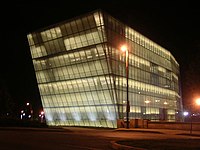Related Research Articles

Cabell Calloway III was an American jazz singer and bandleader. He was associated with the Cotton Club in Harlem, where he was a regular performer and became a popular vocalist of the swing era. His niche of mixing jazz and vaudeville won him acclaim during a career that spanned over 65 years.
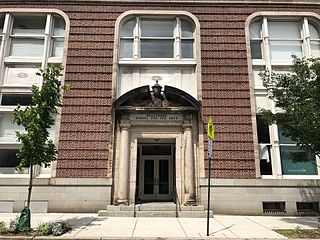
The Baltimore School for the Arts (BSA) is a public performing arts high school located in Mount Vernon, Baltimore, Maryland, United States and is part of the Baltimore City Public Schools system. Established in 1979, The Baltimore School for the Arts offers art concentrations in vocal music, instrumental music, acting, theater production, dance, visual arts and film. The high school has produced numerous "Presidential Scholars" in the Arts and its students have gone on to attend major conservatories and Ivy League Schools.

Center Stage is the state theater of Maryland, and Baltimore's largest professional producing theater.
The music of Baltimore, the largest city in Maryland, can be documented as far back as 1784, and the city has become a regional center for Western classical music and jazz. Early Baltimore was home to popular opera and musical theatre, and an important part of the music of Maryland, while the city also hosted several major music publishing firms until well into the 19th century, when Baltimore also saw the rise of native musical instrument manufacturing, specifically pianos and woodwind instruments. African American music existed in Baltimore during the colonial era, and the city was home to vibrant black musical life by the 1860s. Baltimore's African American heritage to the start of the 20th century included ragtime and gospel music. By the end of that century, Baltimore jazz had become a well-recognized scene among jazz fans, and produced a number of local performers to gain national reputations. The city was a major stop on the African American East Coast touring circuit, and it remains a popular regional draw for live performances. Baltimore has produced a wide range of modern rock, punk and metal bands and several indie labels catering to a variety of audiences.
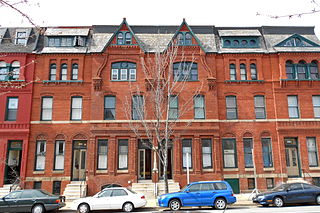
The Station North Arts and Entertainment District is an area and official arts and entertainment district in the U.S. city of Baltimore, Maryland. The neighborhood is marked by a combination of artistically-leaning commercial ventures, such as theaters and museums, as well as formerly abandoned warehouses that have since been converted into loft-style living. It is roughly triangular, bounded on the north by 20th Street, on the east by Greenmount Avenue, and on the south and west by the tracks of Amtrak's Northeast Corridor, though the neighborhood's boundaries include a one-block wide extension over the tracks.

Upton is a neighborhood in Baltimore City, Maryland, United States. The neighborhood is in the western section of the city, roughly between Fremont Avenue and McCulloh Street, extending from Dolphin Street to Bloom Street. Its principal thoroughfare is Pennsylvania Avenue.
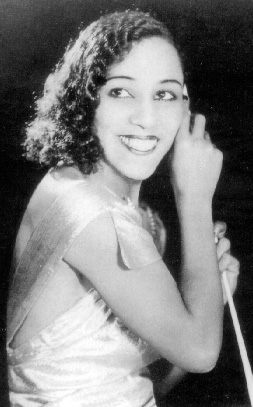
Blanche Dorothea Jones Calloway was an American jazz singer, composer, and bandleader. She was the older sister of Cab Calloway and was a successful singer before her brother. With a music career that spanned over fifty years, Calloway was the first woman to lead an all-male orchestra and performed alongside musicians such as Cozy Cole, Chick Webb, and her brother. Her performing style was described as flamboyant and a major influence on her brother's performance style.

Sandtown-Winchester is a neighborhood in West Baltimore, Maryland. Known locally as Sandtown, the community's name was derived from the trails of sand that dropped from wagons leaving town after filling up at the local sand and gravel quarry back in the days of horse-drawn wagons. It is located north of Lafayette Street, west of Fremont Avenue, south of North Avenue, and east of Monroe Street, covering an area of 72 square blocks, patrolled by the Baltimore Police Department's Western District. The community is 98.5% black.
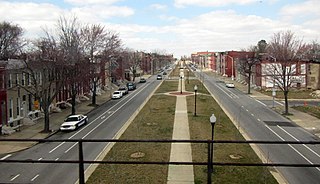
Oliver is a neighborhood in the Eastern district of Baltimore, Maryland. Its boundaries are the south side of North Avenue, the east side of Ensor Street, the west side of Broadway, and the north side of Biddle Street. This neighborhood, adjacent to Johns Hopkins Medical Campus and minutes from the Inner Harbor, lies east of the historic Greenmount Cemetery. The neighborhood is accessible by several bus lines, the Johns Hopkins metro station, Charm City Circulator, Pennsylvania Station (Baltimore), and freeway.

Greenmount West is a neighborhood in the state-designated Station North Arts District of Baltimore City. Its borders consist of Hargrove Alley to the west, Hoffman Street and the Amtrak railroad tracks to the south, the south side of North Avenue to the north, and Greenmount Avenue to the east. Residents in the area include a mix of low, middle and high income families, artists, commuters to Washington DC and working-class Baltimoreans with the majority of residents of African American descent.

Hi De Ho is a 1947 American musical race film directed by Josh Binney. Distributed by All American Entertainment, the film stars an all African American cast, led by Cab Calloway. It first showed at the Squire Theatre in New York, and would be shown in the more than 500 African-American theaters in the US.
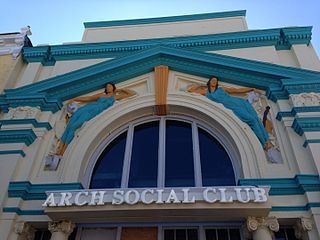
The Arch Social Club was casually founded in 1905 and officially incorporated on March 15, 1912. The club is very much a child of Baltimore's brutally repressive racial environment. Black people at the dawn of the 20th century were savagely pushed to the political, social, cultural and economic margins by a combination of white folkways and state statutes. Out of necessity, African Americans sought collective survival in the construction of a parallel civil society. Schools, churches, benevolent associations, commercial enterprises, cultural venues and every conceivable social institution that addressed the exclusionary nature of the broader white society and day-to-day needs of Black folk were forged–often in the face of de jure, race-driven harassment and humiliation.
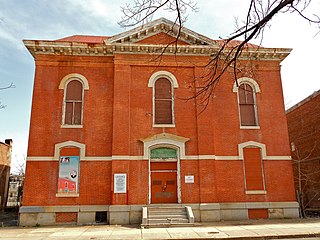
Old West Baltimore Historic District is a national historic district in Baltimore, Maryland, United States. It is primarily a row house neighborhood of approximately 175 city blocks directly northwest of downtown Baltimore. The district includes other housing from grand mansions to alley houses, as well as churches, public buildings, commercial buildings, and landscaped squares. Pennsylvania Avenue, the main street of the community, features a later 20th century municipal market house. Within the district are civic monuments that relate to Baltimore's premier historic African-American community. Such noteworthy figures as Supreme Court Justice Thurgood Marshall, Congressman Parren Mitchell, jazz artist Cab Calloway, civil rights leader Lillie Mae Carroll Jackson, and Carl Murphy, editor of the Baltimore Afro-American newspaper, lived and / or worked in the area.

War Memorial Plaza is a public square, small park and space in Downtown Baltimore between City Hall and the War Memorial Building, between Holliday Street on the west, East Fayette Street on the south, North Gay Street on the east, and East Lexington Street on the north.

The Stavros Niarchos Foundation Parkway, or simply the Parkway, is a movie theater located at 5 West North Avenue in Baltimore, Maryland. The Parkway is open as of May 3, 2017, and is the new permanent home of MdFF. The Maryland Film Festival, a 5-day annual festival created and operated by MdFF, is housed in and around the Parkway and throughout the Station North Arts and Entertainment District.
Bromo Arts District is one of four designated arts district in Baltimore, MD and is centered around the Emerson Bromo-Seltzer Tower, which houses artist studios. The district is roughly bounded by Park Avenue on the east, Lombard Street on the south, Paca Street on the west and Martin Luther King Jr. Boulevard and Read Street on the north and is adjacent to the neighborhoods of Mount Vernon and downtown Baltimore. It is home to the University of Maryland Medical Center, Lexington Market, Westminster Hall and Edgar Allan Poe's gravesite, the former Martick's Restaurant Francais and many cultural institutions including the Hippodrome Theatre, the Everyman Theatre, the Eubie Blake National Jazz and Cultural Center. It is also home to A.T. Jones and Sons, the oldest costume company in the United States.

The history of African Americans in Baltimore dates back to the 17th century when the first African slaves were being brought to the Province of Maryland. Majority white for most of its history, Baltimore transitioned to having a black majority in the 1970s. As of the 2010 Census, African Americans are the majority population of Baltimore at 63% of the population. As a majority black city for the last several decades with the 5th largest population of African Americans of any city in the United States, African Americans have had an enormous impact on the culture, dialect, history, politics, and music of the city. Unlike many other Northern cities whose African-American populations first became well-established during the Great Migration, Baltimore has a deeply rooted African-American heritage, being home to the largest population of free black people half a century before the Emancipation Proclamation. The migrations of Southern and Appalachian African Americans between 1910 and 1970 brought thousands of African Americans to Baltimore, transforming the city into the second northernmost majority-black city in the United States after Detroit. The city's African-American community is centered in West Baltimore and East Baltimore. The distribution of African Americans on both the West and the East sides of Baltimore is sometimes called "The Black Butterfly", while the distribution of white Americans in Central and Southeast Baltimore is called "The White L."
Camay Calloway Murphy was a retired American educator. The daughter of Jazz bandleader and singer Cab Calloway, Murphy was one of the first African-Americans to teach in white schools in Virginia. As an educator, Murphy emphasized music and multiculturalism. She founded the Cab Calloway Jazz Institute and Museum at Coppin State University. She was also the chairman of Baltimore's Eubie Blake National Jazz Institute and Cultural Center and commissioner of Baltimore City Public Schools' Board of Education.
References
- 1 2 "Royal Theatre". Cinema Treasures. Retrieved September 23, 2016.
- ↑ Rao, Sameer; Richman, Talia (July 6, 2019). "Allies join call to spare jazz legend Cab Calloway's Baltimore home from the wrecking ball". Baltimore Sun . pp. 1 and 10.
- ↑ “Newsnight Maryland,” 1999-03-11, Maryland Public Television, American Archive of Public Broadcasting (WGBH and the Library of Congress), Boston, MA and Washington, DC, accessed September 23, 2016. Segment on "The Avenue" begins at 18:24
- ↑ "Royal Theatre - Baltimore". The Concert Database. Retrieved September 23, 2016.
- ↑ "buildings damaged during riots.pdf" (PDF). University of Baltimore . Retrieved 2023-02-22.
